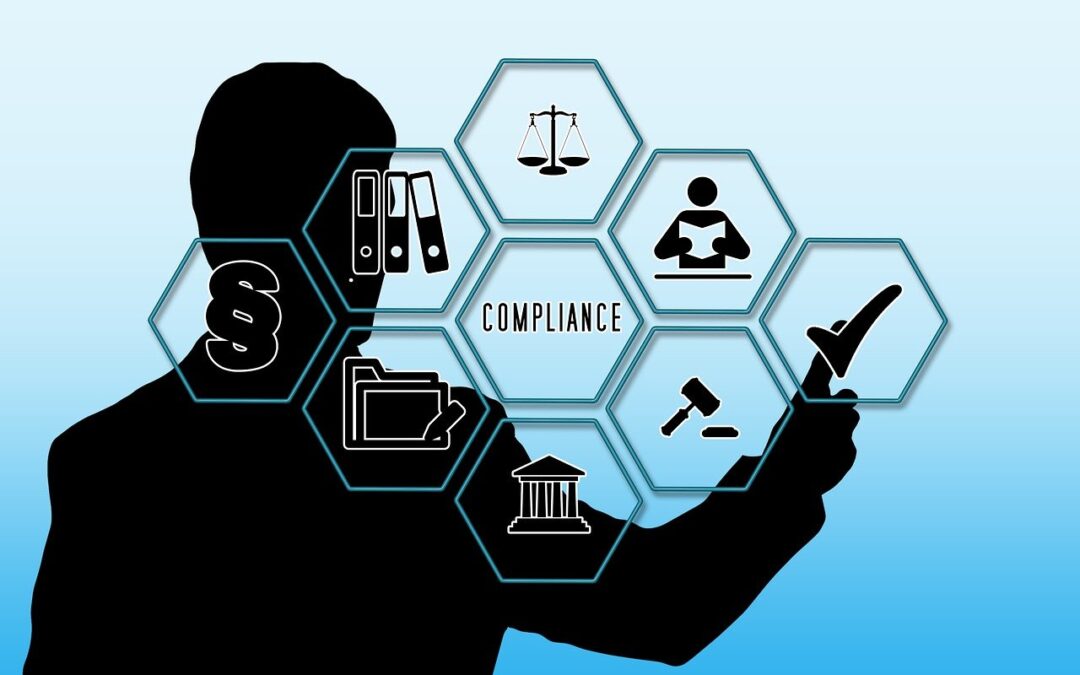The Cybersecurity Maturity Model Certification (CMMC) compliance requirements were recently updated to simplify and clarify the security standards organizations contracting or subcontracting for the Department of Defense must abide by. By 2026, most businesses seeking to contract with the DoD or subcontract with a DoD contractor will be required to obtain certification that confirms their adherence to the standards outlined in the CMMC model. Those that are not able to attest to their compliance will no longer be awarded contracts, creating a significant potential loss for their business.
Sounds simple enough – just comply with the rules, right? Many business owners find the requirements overwhelming. There are multiple levels, each requiring a more stringent set of technologies, policies, practices and procedures. If you feel daunted by it, that’s a pretty understandable reaction.
Here is what you need to know about CMMC compliance.
Who Does CMMC Apply To?
The CMMC compliance requirements apply to any organization in the defense industrial base (DIB). The guidelines want to protect sensitive government information by verifying that contractors and subcontractors meet the requirements set by the government.
Businesses in this industry often face cyberattacks, including from nonstate actors. These guidelines provide improved security to keep this information out of the hands of malicious parties.
Need help with CMMC compliance? Contact VersaTrust to work with a CMMC-registered practitioner.
What are the 17 Domains of CMMC 2.0?
With the CMMC 2.0 requirements, there are 17 different domains specified. These are the aspects of cybersecurity that the regulation focuses on:
- How you access the system remotely and internally; how you restrict data to authorized users
- How assets are identified and documented
- The process requirements for audits and how to protect audit information
- How you conduct awareness activities and training
- How you manage configurations, including their baselines, and how you make changes
- How authenticated entities can gain access
- The plan for detecting and reporting incidents
- How you manage maintenance
- How media is identified, marked, protected, and sanitized
- How you screen personnel and secure critical information
- How physical access is limited
- How you manage backups and recovery
- How you identify and control for risks
- How you define and maintain your system security and perform a code review
- How you implement threat monitoring
- The security systems requirements for communication and system boundaries
- The process for identifying potentially dangerous content, such as malicious content, finding system flaws, and protecting email
What are the levels of CMMC 2.0 and how do they apply?
Within the CMMC framework, the DoD recognizes that not all defense contractors and subcontractors deal with the same level of sensitive information, meaning that not all businesses need the same security practices. For that reason, there are 3 levels within the updated CMMC guidelines.
Level 1: Foundational
This level is required to follow basic cybersecurity best practices. However, they do not need as much documentation and are permitted to conduct self-assessments. This level is intended for contractors with access to Federal Contract Information (FCI) – otherwise referred to as information not intended for public release.
Level 2: Advanced
This certification is for companies that will have access to Controlled Unclassified Information (CUI) and requires additional documentation and more advanced cybersecurity practices. Within level 2, there are 2 different levels of assessments that you would be required to have conducted. One is for businesses within this category that have access to information critical to national security, and the other is for those businesses that do not have such access.
Level 3: Expert
Organizations that achieve this level of certification must successfully demonstrate that their systems are designed to repel Advanced Persistent Threats (APTs). The requirements added on focus on protecting critical information. The businesses that must meet this standard have access to the highest-priority information and some of the most sensitive data. This level requires government-led evaluations.
Overview of CMMC Compliance Requirements
CMMC compliance requirements provide businesses that work with the DoD guidelines to protect some of the most sensitive information about the nation’s security. When applying for a contract, the DoD will let potential contractors know what level of CMMC certification will be required by contractors and subcontractors so your organization does not have to guess about what level they need for their current job.
Remember that the goal of the program is to keep sensitive data secure. Therefore, a business pursuing these certifications will want to look at all the systems that store and transmit this data. A system that allows for secure file sharing and email will play an important role.
Businesses also need a plan to articulate how they will adopt the security measures required by CMMC regulations. This plan should look at the system operations from all angles, including who has access to different parts of the system and under what circumstances. Your organization must operate with a “Trust but verify” strategy.
5 Steps To Start Preparing for CMMC 2.0
As the shift towards CMMC 2.0 begins, you want to prepare your business to apply for these certifications. Here are some steps you can use to start getting ready.
- Understand what kind of government information your company has access to, so you can better gauge what level you’d be required to comply with.
- Gain an independent third-party CMMC audit from a CMMC-registered practitioner. This will help you evaluate your cybersecurity posture and what you need to be fully compliant.
- Create a plan to close the gaps on the requirements of CMMC 2.0 that you’re not yet meeting.
- Develop an implementation schedule that works with your budget and bandwidth while still getting you where you need to go, when you need to get there.
- Change to a managed IT services provider who has a background working with companies that contract with DoD, has a registered CMMC practitioner and is familiar with the requirements outlined in CMMC 2.0.
Common Challenges and Solutions
As you begin implementing these changes into your business, many mid-market companies may face challenges related to the complexity of these cybersecurity regulations and the costs associated with implementing these new strategies.
Fortunately, there are methods you can use to navigate these complexities.
Working with a cybersecurity expert
The top strategy you should implement is working with a CMMC-registered practitioner. A firm like this will already have a solid understanding of CMMC 2.0 compliance regulations. They can also help mid-sized businesses like yours find gaps in your current setup and plan a path forward.
Maintain documentation
Businesses interested in certification should also use a documented methodology to enact these requirements. An organized process that walks you through labeling your gaps, monitoring your implementation, and keeping track of the next steps in the process will help you avoid missing a key component.
Maintaining Compliance
Once you have attained compliance, you must regularly be assessed to ensure you maintain that status. Your level of certification will determine who verifies your cybersecurity, such as a third party or the government, and how often it needs to happen.
Maintaining documentation can also help you stay on top of your compliance requirements. Auditing your cybersecurity posture with the help of a professional firm can ensure that your business continues to abide by these regulations.
Start Towards CMMC Compliance Requirements With VersaTrust
Although adjusting your cybersecurity strategy may seem complicated now, failing to do so can result in lost contracts and opportunities for business growth. Work with a registered CMMC compliance partner to help you navigate the process to get your business compliant as efficiently as possible. Are you getting started on this path? Contact us today to discuss how you can begin preparing for these changes.








